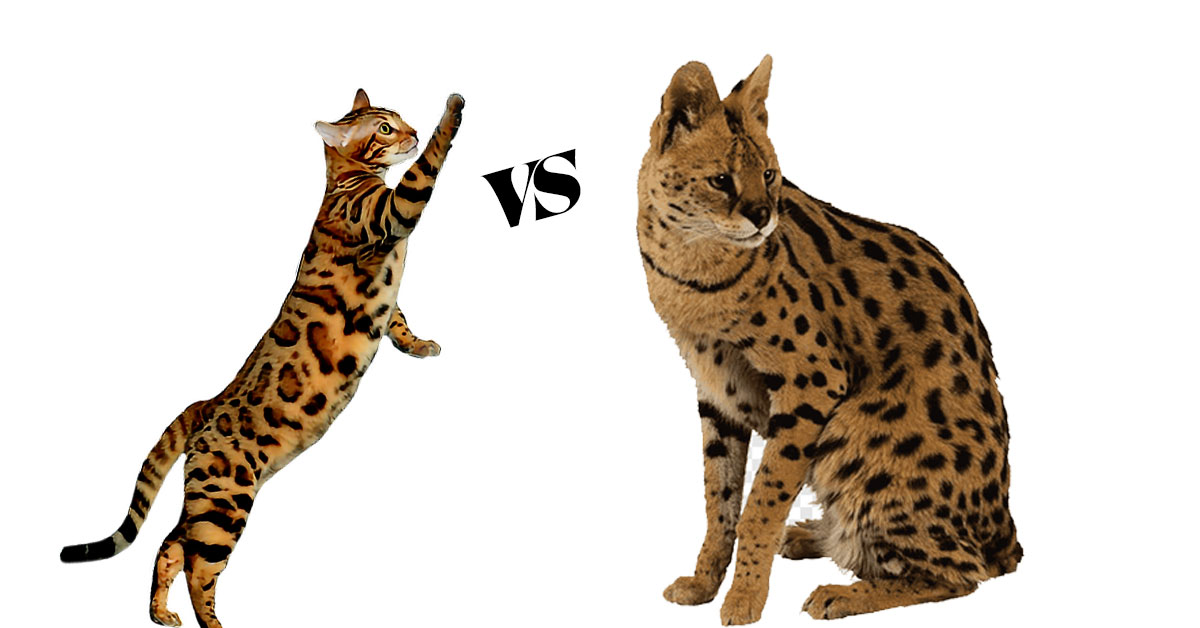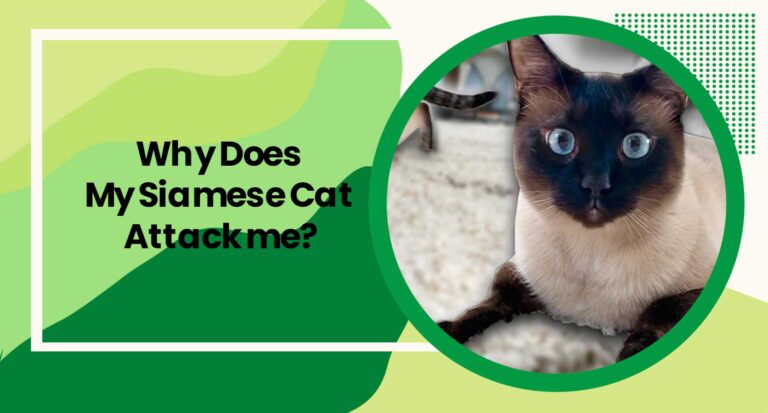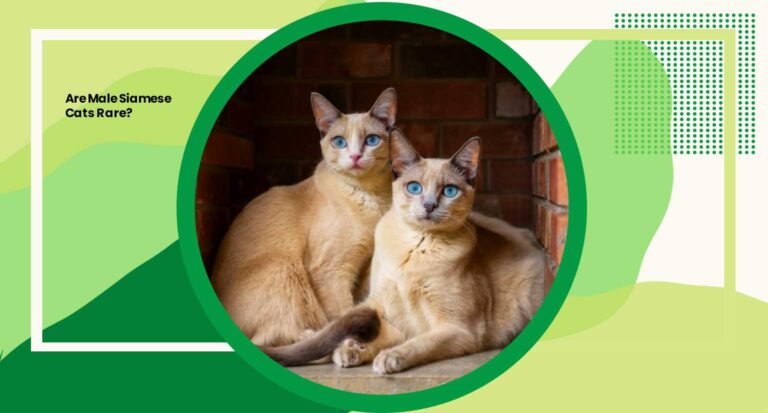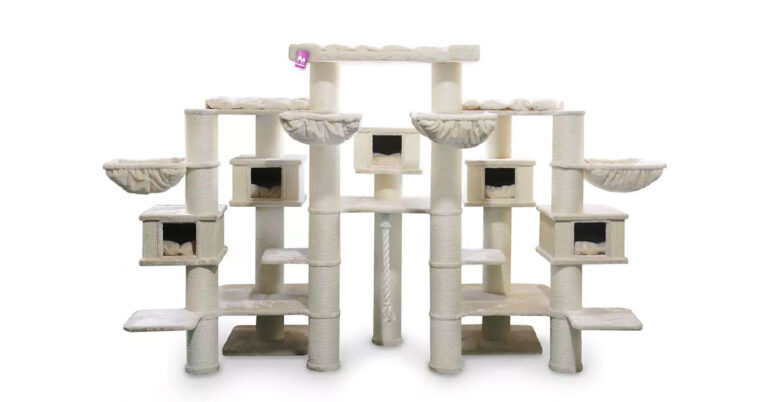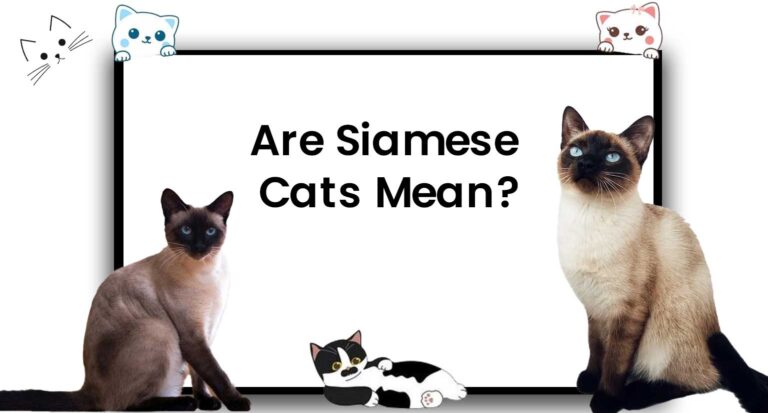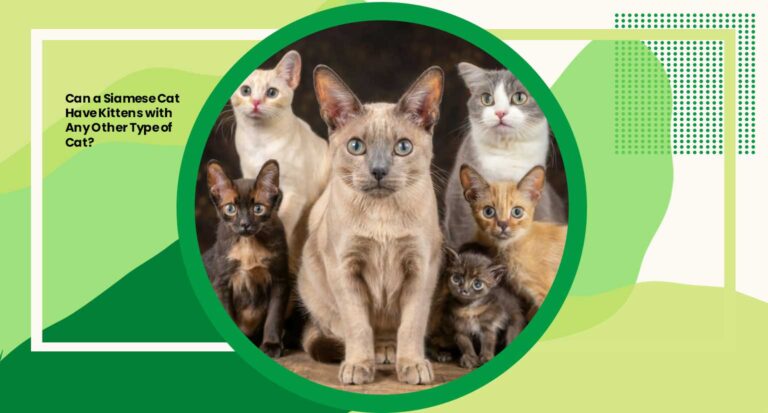Bengal Cat Vs Savannah Cat Size
For those seeking a touch of the wild, hybrid cat breeds like the Bengal and Savannah cats offer an enticing blend of exotic appearance and domesticated companionship. These magnificent felines, descended from wild ancestors, captivate with their unique appearance, larger size, and distinctive coat patterns. But what sets the Bengal cat apart from the Savannah cat? Specifically, how do their sizes compare? Let’s take a closer look at the Bengal cat vs Savannah cat size, and explore other key differences that make each of these breeds truly one of a kind.
Origins and History
The Bengal cat breed has its roots firmly planted in the United States, where the first successful breeding was accomplished by Jean Mill. Mill crossed a domestic shorthair with a female Asian Leopard cat, a small wild cat species. The unique result was the Bengal cat, a breed that retains the wild appearance of its ancestors while enjoying the temperament of an average domestic cat.
On the other hand, the Savannah cat’s origins can be traced back to the crossing of a domestic cat breed with a wild African cat, specifically the Serval. The first Savannah cat was bred in the mid-1980s, achieving a larger size and more pronounced wild features, thanks to the African Serval’s influence. These cats are known for their long legs, high energy levels, and exotic look reminiscent of their wild Serval ancestors. Savannah cats, especially those of the earlier generations, are generally larger and more “wild” in appearance than most other domestic breeds.
Both breeds are recognized by the International Cat Association, with the Bengal also recognized by the Cat Fanciers’ Association. Their breeding history demonstrates the fascinating journey from wild feline to domestic companion.
Bengal Cat Origins
The Bengal cat breed was brought into existence in the United States in the late 20th century. The primary person behind this remarkable breed is Jean Mill. Mill’s aim was to create a breed with an exotic appearance akin to a wild feline but with the temperament suitable for a household pet. She successfully achieved this by crossing a domestic shorthair with a female Asian Leopard cat.
These small wild cats are known for their beautiful and distinctive coat patterns, which Bengal cats have inherited. Today, Bengals are adored for their richly colored, highly contrasted coat of vivid spots or marbled patterns. This breed is recognized by the International Cat Association, and it has gained significant popularity in recent years due to its unique appearance and friendly disposition.
Savannah Cat Origins
Compared to the Bengal, the Savannah cat breed is relatively young. The first Savannah cat, named “Savannah,” was born in 1986. This breed is the result of crossbreeding a domestic cat with a wild African Serval cat. The Serval is a large, wild cat native to Africa, known for its long necks, large ears, and long legs – traits that have been passed on to the Savannah breed.
The Savannah breed was accepted by the International Cat Association in 2001, making them a relatively recent addition to the world of domestic cat breeds. Despite their wild heritage, Savannah cats are known for being affectionate and sociable, although they possess a high energy level that requires lots of mental stimulation and play.
Physical Characteristics
When comparing the physical characteristics of a Bengal cat and a Savannah cat, the difference in size is the first thing to note. Savannah cats, especially male Savannah cats, typically outsize Bengal cats, often reaching the size of a small dog.
Bengal cats are muscular and athletic, with males typically weighing between 10 to 15 pounds and females 8 to 12 pounds. Their coat is short and dense, with distinctive markings that range from spots to marbled patterns. Bengal cats also have round, large eyes that can be any color, and their ears are medium-sized with a broad base and rounded tips.
In contrast, Savannah cats are taller and leaner with long necks, high cheekbones, and large ears that sit on top of their head. An adult Savannah cat can weigh anywhere between 12 to 25 pounds, depending on the generation and sex. Savannah cats have a short, dense coat that comes in various colors and patterns, with black spots being the most common.
Despite these differences, both breeds share some common physical traits such as their athletic bodies, long tails, and unique coat patterns. Their shared heritage with wild cats also gives them a more exotic appearance compared to the average domestic cat breed.
Bengal Cat Characteristics
Bengal cats are widely adored for their wild, exotic appearance that harks back to their wild Asian Leopard Cat ancestors. These are medium to large cats, with males typically weighing between 10 to 15 pounds and females 8 to 12 pounds. Their bodies are athletic and robust, exuding an impression of being on the prowl even during their leisure time.
The most striking feature of Bengal cats is their luxurious coat. It is short and dense, with distinctive markings that range from spots to marbled patterns, mirroring the vibrant aesthetics of a jungle cat. These markings can be black, brown, or black smoke on a background color ranging from golden to cream. The unique coat also sheds less than that of regular house cats, making Bengals a better choice for allergy sufferers.
Bengal cats possess round, large eyes that can be any color, adding to their exotic allure. Their ears are medium-sized, broad at the base with rounded tips. The combination of these features culminates in an attractive, athletic domestic cat breed that retains a hint of the wild in its look.
Savannah Cat Characteristics
Savannah cats are known for their tall, lean bodies, which are a distinctive trait passed down from their wild Serval ancestors. This breed is one of the largest among domestic cats, with males often reaching up to 25 pounds and females around 12 to 15 pounds. However, their size can vary considerably, with earlier generations (F1, F2) being significantly larger than later generations.
One of the most notable features of the Savannah cat is its striking coat. The coat is short and dense, often showcasing a spotted pattern similar to that of a wild African cat. Black spots are the most common, adding a stark contrast to the coat color, which can range from golden to silver.
Savannah cats have large ears that sit high on their head, along with high cheekbones and long necks, contributing to their unique and exotic appearance. Their eyes are typically medium to large in size, with colors that can vary but are often a vibrant green. With their long legs and slim bodies, Savannah cats exhibit a grace and elegance reminiscent of their wild ancestors.
Size Comparison
In the battle of size between the Bengal cat vs Savannah cat, the Savannah cat generally stands victorious. Thanks to their wild Serval ancestry, Savannah cats often dwarf other domestic cat breeds, including the Bengal.
Bengal cats, while not small by domestic standards, tend to be more compact and muscular. They fall into the medium to large category of domestic breeds, with males typically weighing between 10 to 15 pounds, and females between 8 to 12 pounds. They have a sturdy, athletic build which gives them a powerful appearance.
Savannah cats, on the other hand, are one of the tallest and largest domestic cat breeds. An adult male Savannah cat can weigh anywhere from 15 to 25 pounds, while females typically range from 12 to 15 pounds. However, it’s their height that truly sets them apart. These cats have long legs and a slim, athletic body that can reach up to 17 inches at the shoulder, towering over the average domestic cat.
It’s important to note that the size of a Savannah cat can vary significantly based on the generation. Earlier generations, closer to their wild Serval ancestors, tend to be larger than later generations. Therefore, if you’re considering a Savannah for its size, ensure you understand the implications of the different generations.
Coat Types, Patterns, and Colors
Both Bengal and Savannah cats boast unique, stunning coats that contribute significantly to their exotic appeal. However, their coat types, patterns, and colors differ, reflecting their respective wild ancestors.
Bengal cats possess a thick, dense, and luxurious coat. The coat displays two primary types of patterns: marbled and spotted. Marbled Bengals have swirling patterns that look like marble, while spotted Bengals have spots similar to a leopard or jaguar. The color palette of a Bengal’s coat can be diverse, ranging from black, brown, and cream, to golden and even silver.
On the other hand, Savannah cats, akin to their African Serval ancestors, generally sport a short, dense coat with a touchable texture. The coat often features solid black or dark brown spots against a background color that can range from warm gold to cool silver. In some instances, they might exhibit a marbled pattern similar to a Bengal’s, but this is less common.
Ultimately, while both breeds carry the distinctive, wild aesthetics of their respective ancestors, their individual differences add to the allure and variety that cat enthusiasts appreciate.
Bengal Cat Coat
The coat of a Bengal cat is truly a sight to behold. This breed possesses a dense, plush coat that feels luxurious to the touch. The coat’s vibrancy and diversity of patterns and colors are a testament to the breed’s wild heritage.
Bengal cats can primarily exhibit two types of patterns: spotted and marbled. The spotted variety, arguably the most recognized, resembles that of a wild leopard, with large, contrasting spots scattered across their bodies. The marbled Bengal, on the other hand, features a swirling pattern that emulates the look of marble, offering a beautiful contrast to the base color of the coat.
The base color of a Bengal’s coat varies widely, ranging from golden, cream, and brown, to silver and black. The pattern color usually includes black, chocolate, cinnamon, or even blue. Some Bengals also feature a “glitter” in their coat, which gives the fur a shimmering appearance under light.
This wide array of possible coat colors and patterns makes each Bengal cat unique and adds to their overall allure and charm.
Savannah Cat Coat
Savannah cats, much like their wild Serval ancestors, boast a coat that is equally striking and distinctive. The texture of their coat is short and dense, yet remarkably soft, inviting affectionate strokes from their human companions.
The coat’s pattern is typically spotted, featuring solid black or dark brown spots that are generously scattered across the body. These spots offer a dramatic contrast against the base coat color, which can range from a warm golden hue to a cooler silver tone. Though less common, some Savannah cats may also exhibit a marbled pattern, but the breed standard predominantly favors the spotted look.
The Savannah’s coat not only contributes to its exotic appearance but also serves as a testament to its wild lineage. As with Bengals, the unique array of coat colors and patterns makes each Savannah cat a distinctive member of this fascinating breed.
Personality Traits and Energy Levels
Bengal and Savannah cats are not only known for their exotic appearance but also for their distinctive personalities and high energy levels. These active cats, stemming from their wild roots, require more mental stimulation and physical exercise than the average domestic cat breed.
Bengal cats are curious, playful, and highly interactive. They enjoy playing with toys, climbing cat trees, and even playing in water, which is uncommon among cats. Bengals are also known to form strong bonds with their human companions, making them great family pets. Their intelligence and agility make them easy to train for interactive play, tricks, and even walking on a leash.
Like Bengals, Savannah cats are also very active and playful. They have a high prey drive and are often found climbing to high places or chasing interactive toys. Savannahs are known for their loyalty and often form strong bonds with their families. They are more dog-like in their behaviors, capable of learning commands, playing fetch, and walking on a leash.
Both breeds, due to their high energy levels, require a lot of attention and interaction. Providing ample space for them to play and explore is crucial for their wellbeing. It’s important to invest a lot of time into play and interactive activities to keep these breeds mentally stimulated and physically fit.
Bengal Cat Personality
The Bengal cat is known for its vivacious personality and high energy levels. These cats are playful, intelligent, and thrive on interaction and engagement. Their dynamic character requires a lot of stimulation, both mental and physical, to keep them happy and healthy.
Curiosity is a key trait of Bengal cats. They love to explore their environment, investigate new objects, and even exhibit a fascination with water – a trait that sets them apart from most domestic cat breeds. This curiosity, combined with their high energy levels, often leads to agile leaps, brisk runs, and plenty of playtime. It’s not uncommon to find Bengals climbing to high places, hunting toys, or just engaging in general mischief around the house.
Bengals are also known for their affectionate nature. They tend to form strong bonds with their human companions and enjoy being an integral part of the family. Their sociable demeanor makes them great family pets, and their intelligence enables them to learn tricks, respond to commands, and even walk on a leash with relative ease.
In essence, a Bengal cat’s personality is as vibrant and unique as their coat – full of life, interaction, and plenty of adventures.
Savannah Cat Personality
The Savannah cat, much like the Bengal, is an active, adventurous breed with a playful personality. These cats are known for their loyalty, intelligence, and dog-like behaviors. The Savannah’s energy levels are high, requiring regular physical exercise and mental stimulation to stay healthy and content.
Savannah cats exhibit a strong curiosity about their environment, often displaying an irresistible urge to explore, play, and investigate. They have a high prey drive and enjoy interactive play, chasing toys, and climbing to high places. Savannah cats are also known for their remarkable jumping ability, thanks to their long legs and athletic build.
Another striking aspect of the Savannah’s personality is their loyalty. Savannah cats tend to form strong attachments with their human families and often follow their owners around the house. They have been known to learn tricks, respond to commands, and even walk on a leash, much like a dog.
Despite their wild appearance, Savannah cats are loving and enjoy being a part of family activities. Their distinct personality traits make them a delightful and engaging companion, ideal for those who can provide plenty of interaction and space for them to expend their energy.
Care and Grooming Requirements
While Bengal and Savannah cats may look like they require specialized care due to their exotic appearances, their grooming needs are relatively straightforward and similar to those of most domestic breeds. However, these active cats do require certain considerations when it comes to exercise, mental stimulation, and diet to ensure they lead healthy and fulfilled lives.
Bengal cats possess a short, thick coat that requires minimal grooming. A weekly brushing to remove dead hair and distribute skin oils is usually sufficient. Bengals also enjoy water and may even appreciate an occasional bath.
Savannah cats, too, have a short and dense coat that requires little maintenance. Similar to Bengals, a weekly brushing can help keep their coat healthy. Bathing is typically unnecessary unless the cat becomes particularly dirty.
As these breeds have high energy levels, they require a lot of mental stimulation and physical exercise. Interactive toys, climbing trees, and play sessions can help meet these needs. Both breeds are prone to obesity if their active lifestyles are not maintained.
As for diet, both Bengals and Savannahs do well on high-quality cat food. Some owners prefer a raw or partially raw diet due to the breeds’ wild lineage, but it’s always best to consult with a vet to ensure nutritional needs are being met.
Bengal Cat Grooming
Despite their wild appearance, Bengal cats have grooming needs similar to those of most domestic shorthair breeds. Their coat is short and thick, requiring minimal grooming to keep it looking its best.
A weekly brushing session is usually enough to keep a Bengal’s coat healthy and vibrant. Brushing helps to remove any dead hair, distribute skin oils evenly across the coat, and can be a wonderful bonding experience between you and your Bengal. Given their love for water, some Bengals may also enjoy a gentle bath occasionally, though it’s generally not necessary unless the cat becomes notably dirty.
In addition to their coat, other aspects of Bengal grooming include regular ear cleaning, teeth brushing to prevent periodontal disease, and nail trimming. As active cats, Bengals also need a lot of playtime and mental stimulation. They will appreciate a variety of interactive toys, climbing towers, and puzzle feeders to keep them entertained.
A healthy diet is another crucial aspect of Bengal cat care. They thrive on high-quality cat food that is high in protein. While some owners may choose a raw or partially raw diet for their Bengals, it’s always best to discuss such decisions with a vet to ensure the cat’s nutritional needs are being adequately met.
Savannah Cat Grooming
Savannah cats, despite their unique and exotic appearance, are relatively low-maintenance when it comes to grooming. Their coat is short and dense, which does not mat or tangle easily, reducing the need for frequent grooming.
Like Bengals, a weekly brushing session is generally enough to keep a Savannah cat’s coat in good condition. Brushing not only helps remove dead hair and distribute skin oils, but it also provides a great opportunity to check for any skin issues and to bond with your cat.
Bathing is typically unnecessary for Savannah cats unless they get into something particularly messy. They keep themselves clean through self-grooming, but an occasional bath won’t be amiss if needed.
Beyond their coat, regular ear cleaning, teeth brushing, and nail trimming are essential to maintain a Savannah’s overall health. Also, due to their high energy levels, Savannahs require plenty of mental and physical stimulation. A variety of interactive toys, high climbing spaces, and lots of playtime are key to keeping a Savannah cat content.
Regarding their diet, Savannah cats do well on high-quality cat food rich in protein. As with Bengals, some owners opt for a raw or partially raw diet, but any dietary changes should be discussed with a vet to ensure your Savannah’s nutritional needs are being met.
Legal Considerations and Ownership
When considering bringing a Bengal or Savannah cat into your home, it’s crucial to understand the legal implications that can come with owning these unique breeds. These cats are a blend of domestic and wild lineages, which can pose certain legal restrictions in some areas. The regulations vary widely from state to state, and in some cases, even from city to city within the same state.
For Bengal cats, the legal restrictions have eased significantly in recent years. Most states in the United States now allow Bengals of the fourth generation (F4) and later without any special permits. This means that as long as a Bengal cat is four generations or more removed from its wild Asian Leopard Cat ancestor, it is usually considered a domestic cat.
Savannah cats, on the other hand, can face more legal restrictions due to their closer link to the wild African Serval. Some states and cities require permits to own Savannahs, particularly those of the earlier generations like the F1 and F2. Others might ban the ownership of Savannah cats altogether. This is why it’s crucial to research local laws and regulations before deciding to bring a Savannah cat into your home.
Both breeds make wonderful pets and can integrate well into family life. However, potential owners must do their due diligence regarding local laws and ensure they can provide a suitable environment that caters to these breeds’ unique needs and high energy levels.
Potential Health Issues
While Bengal and Savannah cats are generally healthy breeds, they may be susceptible to certain health issues. Being aware of these potential problems can help owners recognize early symptoms and seek veterinary care promptly.
Bengal cats are at risk for certain genetic diseases like progressive retinal atrophy (PRA), an eye condition that can lead to blindness, and hypertrophic cardiomyopathy (HCM), a heart disease. They can also suffer from patellar luxation, a condition where the knee cap moves out of place. It’s important for prospective Bengal owners to work with reputable breeders who screen their breeding cats for such health issues.
Savannah cats, particularly those of the earlier generations, may be larger and live longer than most domestic cats. However, they are also prone to certain health problems. Like Bengals, they can suffer from HCM. They are also at risk for periodontal disease, so regular dental care is essential. Moreover, some Savannahs may have a sensitivity to certain types of anesthesia, which is important to consider when scheduling surgeries or dental cleanings.
Despite these potential health risks, both Bengal and Savannah cats can lead long, healthy lives with proper care, regular veterinary check-ups, and a balanced diet. Both breeds can benefit from preventive health measures like vaccinations, parasite control, and routine dental care.
Bengal Cat Health Issues
Bengal cats, despite their robust appearance, can be susceptible to certain genetic health conditions. The first is Progressive Retinal Atrophy (PRA), an eye condition that can lead to diminished vision and eventual blindness. The disease progresses slowly, and most cats adapt well to their diminishing vision as it happens gradually.
Another health issue to watch for in Bengal cats is Hypertrophic Cardiomyopathy (HCM). This heart disease causes the walls of a cat’s heart to thicken, reducing the heart’s efficiency and potentially leading to other severe complications. Regular screening can help detect this condition early, allowing for management strategies to extend the cat’s life and maintain quality of life.
Bengals may also experience patellar luxation, a condition where the kneecap dislocates or moves out of its normal location. This condition can vary from mild to severe. If severe, it may cause lameness in the cat, but if mild, your Bengal may not display any discomfort or symptoms.
Despite these health issues, Bengals are generally healthy cats. Working with reputable breeders who conduct genetic testing and regular health screenings on their breeding cats can go a long way in ensuring you bring home a healthy kitten.
Savannah Cat Health Issues
While Savannah cats are known for their robust health, they can also be prone to certain health problems. Hypertrophic Cardiomyopathy (HCM), the same heart condition seen in Bengal cats, is among the most common health concerns in Savannahs. Regular veterinary screening for this condition is crucial, as it can develop at any age.
Savannahs may also be prone to periodontal disease, which can lead to severe dental problems and other systemic health issues if left untreated. Regular dental check-ups and at-home teeth brushing can significantly help prevent this condition.
Another important consideration for Savannah cats is their potential sensitivity to certain types of anesthesia. If a Savannah cat needs to undergo a surgical procedure or dental cleaning, it’s crucial to discuss this with your veterinarian, who can determine the safest anesthetic protocol for your individual cat.
Although these health issues may seem daunting, keep in mind that Savannah cats are generally healthy animals. By choosing a reputable breeder who tests their cats for these issues, providing a balanced diet, and ensuring regular veterinary check-ups, you can significantly contribute to your Savannah cat’s longevity and well-being.
Ideal Owners and Living Situations
When considering adding a Bengal or a Savannah cat to your household, it’s important to consider whether your lifestyle and living situation aligns with the needs and behaviors of these breeds. Both breeds have high energy levels, require a lot of mental stimulation, and do best in households where they can get plenty of exercise and attention.
Bengal cats, with their active and playful nature, do well in homes where they can be part of the family’s daily activities. They enjoy being involved and are not cats that will happily lounge around all day. Due to their high energy levels, they do best in homes with a lot of space for them to play and explore. Bengal cats are also known for their affinity for water, so don’t be surprised if they decide to join you for a swim in the pool or a shower!
Savannah cats, due to their larger size and high energy, also require a lot of space. These are not apartment cats; they need a lot of room to roam. Like Bengals, they are highly interactive and intelligent, requiring lots of interactive toys and mental stimulation to prevent boredom. They are also known for their love of high places, so a home with cat trees and high perches would be ideal.
Both breeds do well with families and are generally good with children and other pets. They are social cats and do not like to be left alone for long periods. Therefore, they are best suited to households where someone is home for most of the day or in households with other pets for company.
With their exotic looks and active personalities, Bengal and Savannah cats can make fantastic pets for the right owner. However, these cats are not the best choice for everyone. They require a significant commitment of time and energy and may not be the best choice for first-time cat owners or those with a more sedentary lifestyle.
Bengal Cat Ownership
The exotic appearance and engaging personality of a Bengal cat make it a fascinating addition to any home. However, these are not cats for the uninitiated. With their wild ancestors’ energy and curiosity, Bengals require an owner who understands their unique needs and is ready to engage with them.
Bengal cats are known for their active and playful nature. They need a lot of mental and physical stimulation to keep them happy and healthy. A home with plenty of interactive toys, room to explore, and lots of climbing opportunities would be ideal. These cats love high places, so providing cat trees or shelves is a must. They are also famously fond of water, often playing in sinks or even attempting to join their owners in the shower!
Bengals are social cats and enjoy being part of the family’s activities. They are generally good with children and other pets, and they need companionship. These cats don’t enjoy being left alone for long periods and can become destructive if they get bored.
A potential Bengal owner should be someone who is at home for much of the day or in a family with other pets for company. This breed may not be the best choice for first-time cat owners or those who prefer a more sedate, independent cat. However, for those ready for the challenge, a Bengal cat can be a rewarding and exciting pet.
Savannah Cat Ownership
Savannah cats, with their unique mix of wild and domestic traits, are certainly not for everyone. These large, active cats require a significant commitment in terms of time, energy, and space. A potential Savannah owner should be prepared to meet these requirements.
Thanks to their African Serval ancestors, Savannah cats have a high energy level and a strong desire to explore and play. They need plenty of space and will not be content in a small apartment or a home where they are confined to a small area. They love climbing and jumping, so a home with high cat trees and safe high places to explore is ideal. They also need lots of interactive toys and mental stimulation to prevent boredom and potential destructive behavior.
Savannah cats are social and enjoy the company of their human family members. They generally do well with children and other pets, although their high prey drive can sometimes make them a little too enthusiastic in their play with smaller animals. Potential Savannah owners should be prepared for a cat that wants to be part of all family activities.
Given their unique needs and energetic nature, Savannah cats are best suited to an owner who has experience with cats, preferably with high-energy or hybrid breeds. They require an owner who is at home for a good portion of the day or who has other pets that can keep the Savannah company. While they are beautiful and engaging pets, they are certainly not the right choice for everyone.
Breed Recognition and Associations
Bengal and Savannah cats are recognized by various cat breed associations around the world, but their status varies between different organizations due to their relatively recent development and hybrid origins.
The Bengal cat breed was first developed in the United States and has been recognized by The International Cat Association (TICA) since 1983, achieving championship status in 1991. The Cat Fanciers’ Association (CFA) began accepting Bengals for registration in 2000, and they achieved championship status in 2014. Other organizations like the American Cat Fanciers Association (ACFA) and the Canadian Cat Association (CCA) also recognize the breed.
The Savannah cat, a relatively newer breed, has also gained recognition but is not as widely accepted as the Bengal. TICA granted the breed experimental status in 2001, and the Savannah was accepted for championship status in 2012. However, other major cat breed organizations, like the CFA, do not currently recognize the Savannah cat breed.
When considering either of these breeds, prospective owners should work with breeders who are affiliated with recognized cat associations. These breeders are likely to follow established breed standards and ethical breeding practices, which helps ensure the health and well-being of the cats.
Conclusion
In the debate of the Bengal cat vs Savannah cat size, personality, and care, it’s clear that both these breeds offer unique characteristics that make them intriguing choices for prospective cat owners. With their exotic appearances, high energy levels, and distinctive coat patterns, both the Bengal and Savannah cats serve as captivating reminders of the wild feline heritage embedded in domesticated cats.
However, these breeds are not for everyone. They require dedicated owners who can meet their needs for mental stimulation, physical exercise, and companionship. Both breeds demand a lot of attention, and their larger sizes, particularly the Savannah’s, mean they need more space than your average house cat.
If you’re prepared for the responsibility and have plenty of love and time to give, either a Bengal or a Savannah could make a fantastic addition to your home. Make sure you do thorough research and work with a reputable breeder to ensure that you’re getting a healthy, well-socialized kitten. Whether you decide on the playful and water-loving Bengal or the large and exuberantly active Savannah, you’ll be embarking on an exciting journey with one of these unique and beautiful breeds.
Related Articles:

